Oz Industry Insights: Industry Retrospective
We take a look at a history of Australia's game development industry through the eyes of local industry veterans.
In the first part of GameSpot AU's Oz Industry Insights series, we looked at rising game prices in Australia. Now, we go back in time to look at the history of the Australian game development scene, tracking its meteoric rise through the 1980s to the early 1990s to today and focusing on the success and popularity of some of the industry's most respected developers and iconic Aussie IP. We also take a look at what factors brought about change within the industry and what part the rise of digital and mobile distribution platforms is playing in shaping its future.
It's no secret that the Australian games development industry has been through a rough time in the last couple of years. The global financial crisis took its toll on many local studios, causing loss of revenue, staff cuts, and studio closures across the board. Some wondered if this would be the end of the road for Aussie-made games; others continued to hope that somehow things would right themselves. Eventually, studios began to reform: smaller than before and with a new direction. The increasing popularity of digital distribution and mobile platforms gave hope to many, signalling a rebirth in the local industry and paving the way for new successes in a new market.
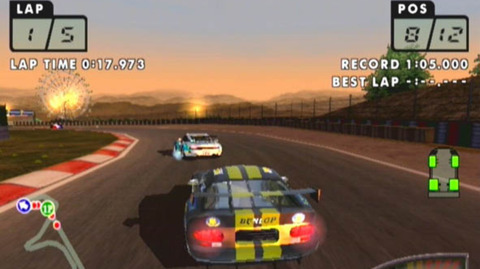
But there's more to the Australian development industry than Flight Control and Fruit Ninja. The industry is built on solid home-console foundations, laid down in the late 1980s by a handful of passionate and influential individuals that successfully nurtured a growing business. Once upon a time, Australia was a powerhouse of game development, producing best-selling international titles such as The Hobbit, which sold more than a million copies worldwide upon its release in 1982, and pioneering game design and development strategies influential to the growth of not just the worldwide industry but the medium of video games itself.
In a time when video games were still a nascent medium, Australia's game development industry was booming with innovation, paving the way for future generations of developers and creating a business framework for what would soon become one of the most profitable industries in the world.
In order to paint an accurate picture of the personalities and games that shaped the beginnings of Australia's game development industry, GameSpot AU has spoken to a number of key industry figures who have humbly shared with us their early experiences and memories of working with studios such as Beam/Melbourne House, Micro Forte, and Strategic Studies Group. Through these accounts, GameSpot AU hopes to illuminate both the strengths and weaknesses of Australia's game development industry, highlight the shifts and influences that caused it to change, and reflect on those new trends that will help it grow and evolve in the next decade. In Part 1, we will look at the early history of the industry and the key players that helped define it; in Part 2, we will speak to industry luminaries about the past and the future.
The Big Players
The birth of the Australian game development industry in the early 1980s saw three studios leading the charge: Beam (later Melbourne House), Strategic Studies Group (SSG), and Micro Forte.
Beam/Melbourne House
Beam was founded in 1980 by Alfred Milgrom and Naomi Besen, the UK founders of the Melbourne House book publishing company. The Melbourne-based studio worked independently until 1999, when it was acquired by Infogrames (later Atari). It was sold to Krome Studios in 2006.
In 1981, Beam obtained the licensing rights to J.R.R. Tolkien's The Hobbit and began to develop an adventure game with real-time elements, promising the original publishers to include a copy of the book with each copy of the game sold. The game, developed at Beam by Phillip Mitchell, was published by Melbourne House and released in 1982, where it reached number one in Europe and went on to sell more than a million copies worldwide, establishing Beam as a groundbreaking new Australian talent.
In 1987, Nintendo granted Beam a developer licence for the NES, making Beam the second non-Japanese studio developing for the new console. By 1990, Beam had 30 employees, and by 1991, its first subsidiary, LaserBeam Entertainment, was established to publish Nintendo games--the only Australian company at the time to obtain an official licence.
Infogrames bought Beam in 1999, officially changing its name to Infogrames Melbourne House. At this time, more than 130 developers were employed at the studio. In 2003, Infogrames adopted the brand name Atari, renaming the original Beam studio Atari Melbourne House. The studio was then purchased by Australia's then-largest games developer, Krome Studios, as an extension of its Brisbane Studios in 2006.
Notable Beam/Melbourne House games include: Lord of the Rings: Game One, The Way of the Exploding Fist (the first martial arts game for the home computer), Rock'n Wrestle (the first wrestling game for the home computer), Mugsy, Mugsy's Revenge, Street Hassle, The Hunt for Red October (the first Game Boy game to feature head-to-head arcade action), Star Wars for the NES, Super Smash TV for the SNES, Fist 2: Combat,
Strategic Studies Group (SSG)
SSG was founded in 1983 by Ian Trout and Roger Keating. Trout was a bookseller, and Keating had some experience in making games, having written the game Conflict, which was published by Strategic Simulations Inc in 1979. After forming the studio, Trout and Keating made Reach for the Stars, a sci-fi strategy game published in 1983 for the Commodore 64. The game is credited with being one of the earliest known published games of the 4X genre (explore, expand, exploit, exterminate).
Notable SSG games include: Decisive Battles of World War II series, Battlefront, Halls of Montezuma, Europe Ablaze, Carriers at War series, Rommel, Decisive Battles of the American Civil War series, and Gold of the Americas. The studio continues to run today.
Micro Forte
Micro Forte was founded in 1985 by university friends John De Margheriti, Steve Wang, Stephen Lewis, and John Reidy. Over the years, the studio won a number of business and game industry awards for their contribution to innovation within the Australian game development scene, including the 2002 Asia Pacific ICT Award (APICTA) (Creative Digital Industries category) and the 2003 Telstra and Australian Government Small Business Award (Panasonic Australia Business Award category).
The studio's first title, Official America's Cup Sailing Simulation, was developed for Electronic Arts and released in 1986 for the Commodore 64 on a budget of roughly A$20,000. It sold in excess of 60,000 units in Australia. The studio's second title, Demon Stalkers, was also for EA--the game was based on the same idea as the arcade title Gauntlet.
In 1989, Micro Forte halted its game development in order to allow its founders to attain more business experience. In 1994, the company regrouped and worked on children's titles before coming up with a new idea for a communication system to be used in massively multiplayer online role-playing games: De Margheriti and Lewis developed a patent and subsequently won a research and development grant from the Australian government. The project--codenamed "Large Scale Multiplayer Persistent Universe"--eventually became BigWorld Technology, a new strategy that aims to help developers create better MMO games on multiple platforms with more players.
While still developing the early ideas for BigWorld, De Margheriti founded the Academy of Interactive Entertainment (AIE) in order to join together and support Australian-based IT-related businesses. (De Margheriti was made honorary ambassador by the Australian Capital Territory Government for his efforts in creating AIE). AIE continues to train developers in fields such as 3D animation, modelling, texture art, and game programming.
De Margheriti also set up the Australian Game Developers Conference (AGDC), which enables the local development industry to meet once a year and discuss new strategies and recruit new talent. In conjunction with AGDC, De Margheriti founded the Game Developers Association of Australia (GDAA), providing the initial funds to allow Australian game developers to communicate and share resources.
Notable Micro Forte games include Official America's Cup Challenge, Demon Stalkers, FireKing, Nordice, Bombs Away, Enemy Infestation, Fallout Tactics: Brotherhood of Steel, Hotwheels: Bash Arena, Citizen Zero, and Super Spy Online. Micro Forte continues to run today. Click on the Next Page link to see the rest of the feature!
In Part 1 of GameSpot AU's Oz Industry Insights series Industry Retrospective we looked at the history of the Australian game development scene from the early 1980s to today, tracking the success of some of the industry's most respected developers such as Beam/Melbourne House, Strategic Studies Group, and Micro Forte. This week, we speak to industry veterans John De Margheriti, Steve Fawkner, George Fidler, and John Passfield about the future of the industry and their recollections on luminary Adam Lancman.
The Past and Future: Industry Experts Weigh In
The beginnings of Australia’s game development industry can be traced back to a few passionate individuals with a shared enthusiasm for video games and a good head for business. John De Margheriti, Steve Fawkner, George Fidler, and John Passfield remember the local industry in the early 1980s as a place where anything was possible.
“We definitely were a lot less reliant on work-for-hire back then,” Steve Fawkner remembers. “Although there were a considerable number of licensed titles coming from Beam, most other Australian companies grew up creating their own IP. What was great back then was that we weren’t afraid to experiment; our original games were quite innovative, and we had a lot of successes from it. Licences are great, but they don’t sustain you forever. You get dead periods between projects, you are very susceptible to currency fluctuations, and you have nothing to fall back on if there is an unforeseen cancellation. In effect you are reliant upon the generosity of others.”
Fawkner wrote his first game in 1983--Quest for the Holy Grail. Since game publishing wasn’t something anyone in the Australian industry was an expert on, Fawkner sold the game by taking it to gaming conventions and distributing it free of charge, then asking people to send him A$5 if they liked it. Fawkner managed to sell 32 copies in total, a number he is still proud of. His first commercial success came with the beginning of the Warlords franchise in 1989; the title was published through SSG, and won a number of gaming awards, leading Fawkner to establish his own company, Infinite Interactive, and join forces with SSG for the next 13 years to publish over a dozen titles.
John De Margheriti had a similar start in the industry. After experimenting with electronics, filmmaking, and game-making in his teenage years, De Margheriti studied electrical engineering at the University of NSW where he and good friends Steve Wang and Stephen Lewis spent most of their free time making computer games on a Commodore PET. While working part-time at a computer store in Sydney, De Margheriti came across someone in need of developing a game based on the recent Australia win of the America’s Cup sailing tournament. De Margheriti called on Wang, Lewis, and John Reidy to help, and, 72 hours later, the team successfully pitched a demo of the sailing simulation title to Armchair Entertainment. The game was developed and later sold to EA, which gave the team two more games to program: Demon Stalkers and FireKing.
Realising they probably needed to call themselves something if they were going to keep making games, De Margheriti, Wang, Lewis, and Reidy settled on "Micro Forte", a name that was intended to mean the opposite of Microsoft (that is, developing games, not business systems). Soon after, Wang and Lewis tactfully told De Margheriti his true strength was not programming, but managing and winning new projects. This ultimately saw De Margheriti start on his path to entrepreneurship.
“In 1996, during Micro Forte’s expansion years, there was a need for the hiring of 3D animators and artists, and at that time there was a clear lack of knowledge in that area and little or no available talent,” De Margheriti says. “I decided to establish the Academy of Interactive Entertainment (AIE) as a business unit to work towards solving this problem. I realised that Micro Forte’s shortages were not just my shortages; other industry-related companies like Beam Software were also suffering a similar fate. The AIE has since grown from a small division with 10 students, to an independent, nationally accredited, small registered training organisation with campuses in Sydney, Melbourne, Canberra, and a campus opening soon in Seattle, USA.”
Despite all the original IP coming out of the Australian scene in its early days, it didn’t take long for studios to realise the quickest way to make money was to accept work-for-hire contracts, which eventually became the status quo.
“Back in the ‘80s it was barely an industry,” John Passfield says. “It was only when more studios came along, spread across the country and each doing something on the global market. Despite the successes of Destroy All Humans!, Ty the Tasmanian Tiger, and Dark Reign, I think we were seen as a nice place to go to go get licensed B-grade games made at half the cost of US studios. Unfortunately, we never produced a AAA game that made people sit up and take notice, so we never shook off that perception.”
Passfield grew up writing games--while still in high school in 1984, he wrote a game called Chilly Willy for the Microbee system, which was eventually published. The following year, his newest work Halloween Harry enjoyed similar success, securing Passfield’s future career as a game maker.
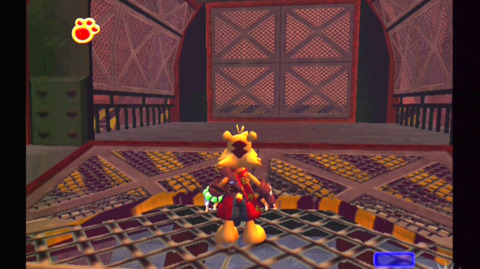
After studying computer science at university, Passfield worked for Telstra before life in a cubicle proved too much; he left two and a half years later to start his own game studio with Steve Stamatiadis, Robert Crane, and Tony Ball. Under the name Gee Whiz! Entertainment, the team re-made Passfield’s Halloween Harry for the PC, and released the title in 1993. Gee Whiz! Entertainment eventually grew into Krome Studios, which Passfield co-founded with Steve Stamatiadis and Robert Walsh. In 2004, Passfield left Krome and joined Pandemic Studios as a creative director before leaving again in 2009 to join 3 Blokes Studio as co-owner.
In the late 1990s, the arrival of studios such as Blue Tongue, Tantalus, Pandemic, Krome, Auran, Big Ant, and Torus Games signalled a new era for the Aussie industry--one that was in dire need of regulations, and a cohesive community spirit. In 1999, De Margheriti realised that to really help the Australian games industry grow, a wider support framework was really needed, leading him to found the Australian Game Developer’s Conference [AGDC] and the Game Developers' Association of Australia (GDAA).
“There was only a small group of us back then; it was pretty scary in that if you failed, there might not be a job in the games industry to go to unless you were prepared to move overseas. In the 1990s things really started to pick up with more development studios starting up, and we were all in need of more talent to work in our studios, which was one of the reasons for the birth of the Academy of Interactive Entertainment. It was established to help the three original studios to find talent, but quickly became the talent powerhouse for the rest of the industry. Micro Forte’s strength was the strength of friendship that existed with all the founders, especially Steve Wang, Simon Hayes, and myself. It allowed us to trust each other and to cover each other’s backs as we experimented with BigWorld.”
By that stage, more studios had begun to once again experiment with original IP, some with more success than others.
“The main focus in the 1990s was how to grow your studio to be big enough to keep on attracting ever-increasing projects,” De Margheriti says. “Simply put, if it wanted to keep on securing publisher deals, the team sizes needed to be bigger. The [work-for-hire model] certainly had its successes and there were some great hits, but it was largely dependent on publishers not pulling your project before release. Development teams fluctuated in size greatly depending on what contracts you could secure. I don’t think we as an industry have ever succeed as the development costs kept on escalating, so doing an original title was like betting the farm each time. We were the small guys Down Under, but we did world-class, honest work and had a small group of talented and committed people. This got us a long way, but it’s no longer sustainable.”
Both De Margheriti and Fidler share a history with Adam Lancman, who is recognised by many as a luminary for the Australian game development industry. Lancman joined Beam Software as its financial director in 1982, becoming joint managing director in 1989 and CEO in 1999. He resigned from the company in 2001, but stayed on as the president of De Margheriti’s newly-formed GDAA. Lancman unexpectedly died in 2005, at age 46.
“We made a great team,” De Margheriti says of Lancman. “We all had great trust in each other. In the end when Adam had left Infogrames, we were considering offering the CEO role of Micro Forte to him and were discussing it before he died. Adam was very important as he really cared, like me, about the industry. He had over 25 years of expertise and he loved the industry and everyone in it.”
“In many regards, Adam was the Australian development community,” Fidler adds. “He had a deep understanding of both game development and publishing, which made doing business with him effortless. I learned much about running an efficient development studio from him and hired many people over the past 20 years, who were trained by him. The Australian games industry lost one of its foundations with his passing.”
Fidler joined Electronic Arts in 1989, working at the publisher’s Australian distributor, ECP Pty Ltd, on the Gold Coast. After working on the publishing side of the business, Fidler was given the opportunity to start a development business in the Asia Pacific region. Heading up the EA production team in Australia, Fidler began working with many external developers including The Creative Assembly (UK) as well as Beam. His focus was to leverage the EA Sports brand with local sports franchises like Australian Rules football, rugby league, rugby union, and cricket. Fidler then left EA to set up and run Creative Assembly’s Brisbane studio, where he worked on Rome: Total War and Medieval II: Total War.
After more than 20 years working in the industry, Fidler now works for 3 Blokes Studio in Brisbane, making social games for Facebook.
“It’s totally fresh and new to me, but also exciting,” he says. “The industry was alive and well in Australia when I joined in 1989. Beam was the industry success story--they had been a very successful work-for-hire studio and by 1990 were starting to fund their own title development. I remember flying down to Melbourne to meet with Adam Lancman because Beam was a very impressive studio and I was keen to look for opportunities to work with them. In the end, EA co-published Ashes Cricket and Krush, Kill ‘n’ Destroy. Not only did both products do really well in the market, but Adam and I formed a close friendship and great working relationship.”
While all four luminaries recognise the impact the global financial crisis had on the Australian development industry--sending it into a spiral of debt, cancelled projects, staff layoffs, and numerous studio closures--most believe that it also brought with it some good. Fawkner believes that something large and unfortunate happens in the industry around every five years.
"Unsurprisingly, this trend every five-year period coincides with the middle of a console/hardware cycle,” he says. “A generation of consoles has become established, publishers acquire some key developers, and external/independent studios feel the pinch as their work is taken away and given to these new internal studios, or outsourced to cheaper locales. I think that we reinvent ourselves every time this five-year cycle hits, and that is when we, as an industry, go through a painful rebirth process.”

De Margheriti says despite the recent events in the Aussie industry leading to studio closures and numerous staff cuts, there are elements of both good and bad in its future. He believes there is more opportunity for smaller studios to work on platforms like the iPhone and iPad.
“As numerous Australian studios started floundering, it gave the amazing talent pool the opportunity to strike it out and go at it alone focusing on much smaller, self-funded titles. This is the renaissance of the games industry in Australia and I believe it will eventually be bigger than what it was. Now is the time because we are at the beginning of a new product life-cycle. I think we’re still relevant in the global industry because Australians are able to deliver projects on time and on budget, but as the start-ups start making hit games, which are their own IP, you will see these studios expand and their success will have imitators. I think diversification is the real key [to the industry’s future]--if you’ve got more than one thing going, then you have a better chance of success. The market has shifted and we need to embrace those changes and take advantage of the new opportunities that present.”
The others agree that new platforms, new distribution methods, and most importantly new IP, is the way forward for the industry. With the Australian dollar going from strength to strength, it is not hard to believe that the industry’s work-for-hire days can soon be left completely behind.
“I do believe we’ve had an over-reliance on work-for-hire,” Fawkner says. “I certainly don’t think we should have ignored it--it has kept our industry alive for many years. I just think we could have taken a few more chances to establish some more original IP in this country. I think a few Australian studios will emerge over the next few years that are very strong, creatively and financially. I think there will also be many smaller studios that spring from them, and hopefully the professional creative culture will filter down.
"With the revolution in digital distribution, we don’t need to be close to the retail locations in the USA or Europe to effectively distribute there, so that barrier is growing weaker all the time, and that has been one of the key things holding us back. As far as direction goes, I think it is as simple as three things: games should foster community, not isolation; they should be provided as a service, not a product; and every game should be polished until it hurts."
Fidler believes the last few years have seen huge changes in the local development scene, with large titles and big budgets replaced by smaller studios and the emergence of strong casual and social games. While some see this as a negative, Fidler says this change plays to the strengths of the local industry.
“These kind of games focus on gameplay innovation, rather than huge production values; they also allow developers to access markets directly, rather than having to rely on large multinational publishers. Consequently, we’re now seeing a migration of game developers from the old industry, to the new, including myself. We are now considered world-class in this space, and we’ve had more success in this market than in any other. It’s amazing.”
Like De Margheriti and Fawkner, Fidler sees original IP as the key to the future success of the Australian game development industry. He believes studios must move away from the work-for-hire model and look towards creating original properties.
“In the past, this has been difficult for two reasons: a lack of local venture capital and huge development budgets. It cost tens of millions of dollars to make video games. The budgets for casual and social games are much lower, which gives us the opportunity to fund projects ourselves. I think social-game mechanics are pervading every genre, on every platform of interactive entertainment. Electronic marketing and distribution, lower purchase prices and revenue streams, from in-game purchases and advertising are all here to stay.”
Despite things like the GFC and a global industry shift towards producing bigger, more blockbuster-type titles, Passfield believes the iPhone was the real catalyst for change in the Australian game development industry. He says it has grown to include more avenues of distribution and development, such as casual games, the free-to-play model, and mobile games.
“To be honest, the old industry was heading into a meltdown anyway. The focus was shifting toward games like Call of Duty with movie-sized budgets and long production times, a model which can only support a few big developers. The iPhone gave developers like Firemint and Halfbrick the chance to do something that no Aussie developer has done--create major hit games on the world market. When Steve Ballmer singles out your game (Fruit Ninja) in a keynote success, or when Ellen DeGeneres does a comedy sketch around your game (Fruit Ninja, again) you know you have made an impact on pop culture.”
There is no longer a question of whether or not the Aussie industry is thriving; according to Passfield, this is not the same industry that had its beginnings in the ‘80s. This is a new, stronger industry with a focus on small teams and new platforms, whose investment potential is staggeringly bigger than its predecessor.
“I would argue that we, as an industry, are more successful than ever. Will we have 300-plus person studios again? Probably not. But I never saw that as a sign of success. What I count as success is high quality games in the top 10 around the world and great return on investment. It's easy to work out what should have been done in hindsight. What is important is for those still stuck in the old way of thinking to change quickly--embrace digital distribution, embrace metrics, explore free-to-play models and social play. Don't stick your head in the sand waiting for the old industry to recover.
"Things are moving so fast that most of what I say today will be irrelevant tomorrow, but the one thing I can guarantee is that we will continue to experience rapid change. Every developer needs to keep their eye on emerging trends and react fast. One thing I've learnt over the last 25 years is to stay nimble--you never know what is just around the corner." What are your thoughts on Australia's game development industry? What are some of your favourite Aussie-made games?
Got a news tip or want to contact us directly? Email news@gamespot.com

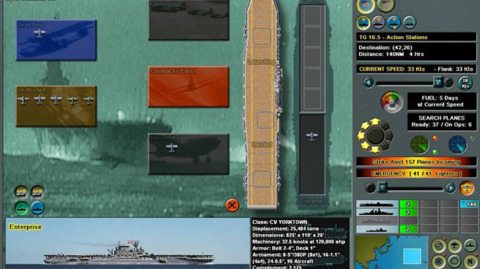

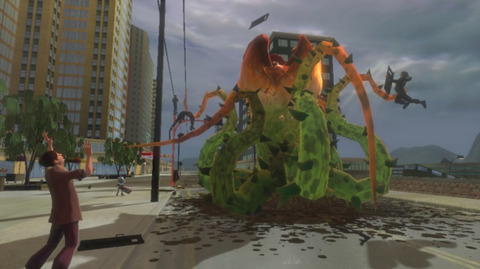
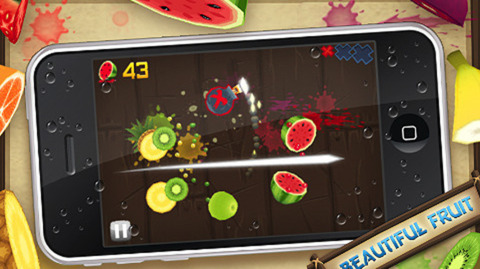
Join the conversation